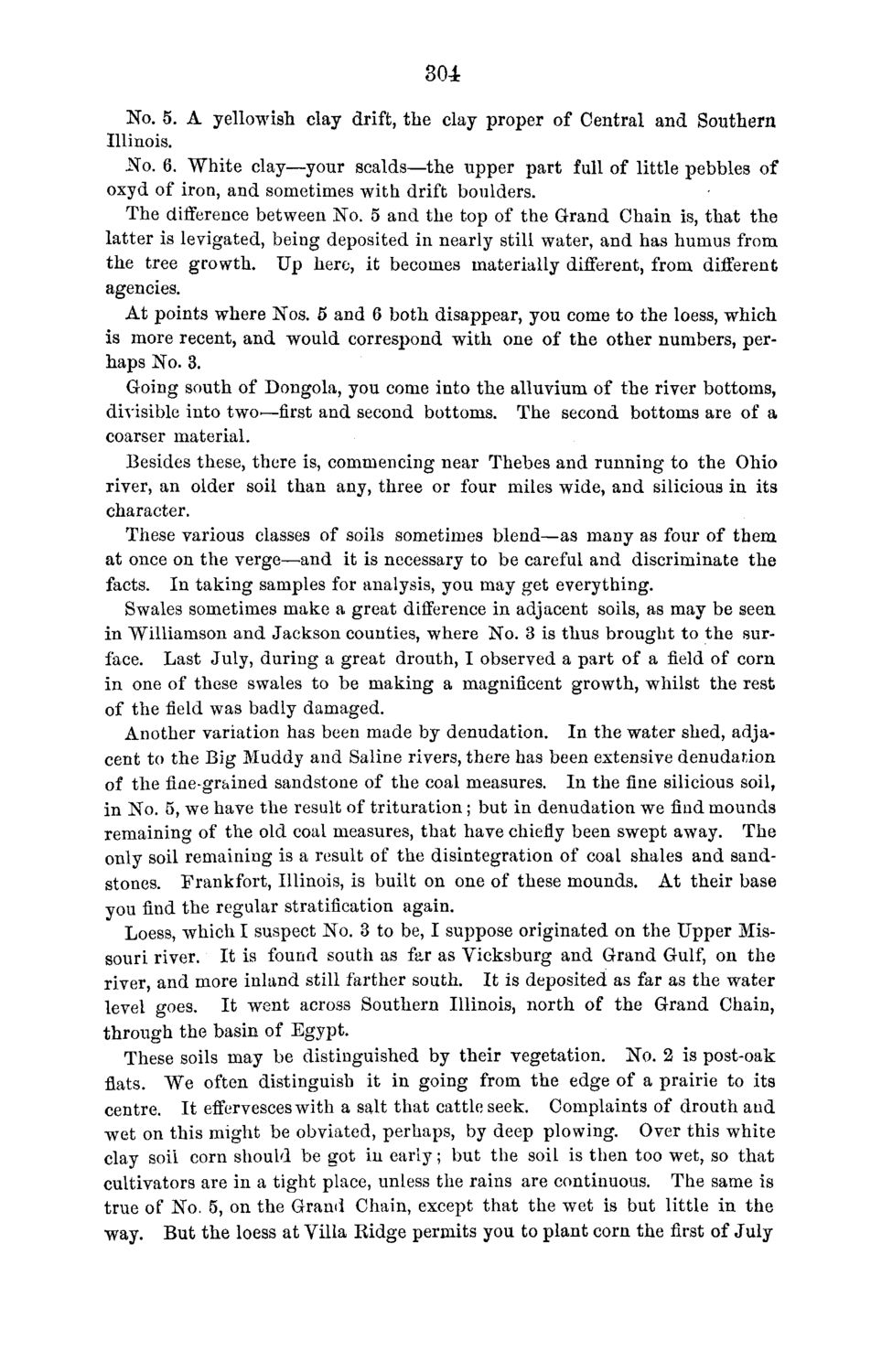| |
| |
Caption: Board of Trustees Minutes - 1870
This is a reduced-resolution page image for fast online browsing.

EXTRACTED TEXT FROM PAGE:
304 No. 5. A yellowish clay drift, the clay proper of Central and Southern Illinois. No. 6. White clay—your scalds—the upper part full of little pebbles of oxyd of iron, and sometimes with drift boulders. The difference between No. 5 and the top of the Grand Chain is, that the latter is levigated, being deposited in nearly still water, and has humus from the tree growth. U p here, it becomes materially different, from different agencies. A t points where Nos. 5 and 6 both disappear, you come to the loess, which is more recent, and would correspond with one of the other numbers, perhaps No. 3. Going south of Dongola, you come into the alluvium of the river bottoms, divisible into two—first and second bottoms. The second bottoms are of a coarser material. Besides these, there is, commencing near Thebes and running to the Ohio river, an older soil than any, three or four miles wide, and silicious in its character. These various classes of soils sometimes blend—as many as four of them at once on the verge—and it is necessary to be careful and discriminate the facts. In taking samples for analysis, you may get everything. Swales sometimes make a great difference in adjacent soils, as may be seen in Williamson and Jackson counties, where No. 3 is thus brought to the surface. Last July, during a great drouth, I observed a part of a field of corn in one of these swales to be making a magnificent growth, whilst the rest of the field was badly damaged. Another variation has been made by denudation. I n the water shed, adjacent to t h e Big Muddy and Saline rivers, there has been extensive denudation of the fine-grained sandstone of the coal measures. I n the fine silicious soil, in No. 5, we have the result of trituration; but in denudation we find mounds remaining of the old coal measures, that have chiefly been swept away. The only soil remaining is a result of the disintegration of coal shales and sandstones. Frankfort, Illinois, is built on one of these mounds. At their base you find the regular stratification again. Loess, which I suspect No. 3 to be, I suppose originated on the Upper Missouri river. I t is found south as far as Vicksburg and Grand Gulf, on t h e river, and more inland still farther south. I t is deposited as far as the water level goes. I t went across Southern Illinois, north of the Grand Chain, through the basin of Egypt. These soils may be distinguished by their vegetation. No. 2 is post-oak flats. We often distinguish it in going from the edge of a prairie to its centre. I t effervesces with a salt that cattle seek. Complaints of drouth and wet on this might be obviated, perhaps, by deep plowing. Over this white clay soil corn should be got in early; but the soil is then too wet, so t h a t cultivators are in a tight place, unless the rains are continuous. The same is true of No. 5, on the Grand Chain, except that the wet is but little in the way. But t h e loess at Villa Ridge permits you to plant corn the first of J u l y
| |